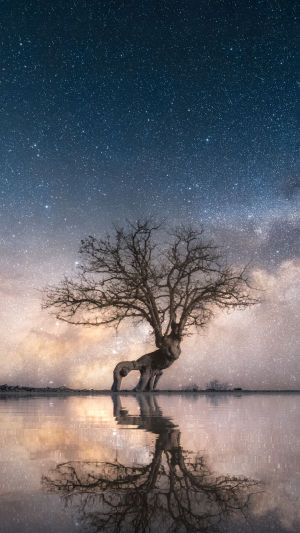Starry photography has become increasingly popular in recent years. More and more photographers are capturing the beauty of the night sky, and even those who have never tried it before are eager to take part.
However, capturing the stars in all their glory requires specific techniques and preparation.
Preparation
To capture stunning photos of the night sky, it is essential to find the perfect location with ideal conditions. In cities with bright and bustling light pollution, stars are hard to come by. Therefore, it is necessary to travel to remote areas with minimal light pollution.
Long exposure times are required for starry photography, which means that the camera must remain completely still during the shoot. Therefore, using a stable tripod is essential to avoid any minor movements that can affect the exposure effect.
Parameter Settings
The brightness of the night sky is relatively uniform, making parameter settings relatively easy. It is usually recommended to use a wide-angle lens to capture the stars.
First, set the aperture to a large opening, and set the ISO sensitivity to around 4000. These settings are ideal for capturing the beauty of the night sky.
To determine the exposure time, you can use the "500 rule" to calculate the appropriate shutter speed. This rule involves dividing the equivalent focal length of the lens by 500, which will provide a suitable exposure time.
Shooting Techniques
To achieve the best results when capturing the stars, it is important to follow some essential shooting techniques. First, it is necessary to identify the position of the constellations and planets and locate them on the star map or observatory.
This way, you can capture them in your photo. Second, focus your lens manually, as automatic focus may not work correctly in a low-light environment. Finally, use a remote control or timer to trigger the shutter to avoid any vibrations caused by the photographer.
Post-Processing
After the shoot is completed, a certain amount of post-processing is required to enhance the quality of the photo.
Typically, some basic adjustments are necessary, such as increasing exposure, contrast, and sharpness. Additionally, special processing techniques can be used to enhance the photo's artistic effect, such as the enhancement of star tracks and nebulas.
Precautions
When capturing the beauty of the night sky, it is essential to consider some safety and environmental issues. First, ensure you select a safe shooting location and avoid entering dangerous areas, such as steep hillsides or cliffs.
Second, respect the environment and avoid shooting in protected areas or where shooting is prohibited. Finally, respect the local culture and customs and avoid shooting at inappropriate times or locations.
Common Problems and Solutions
When capturing the stars, various problems may arise, such as images that are too dark or too bright or excessive noise.
To overcome these issues, adjust the camera's parameters, use filters, and perform post-processing. Moreover, the quality and artistry of photos can be enhanced by multiple shooting, synthetic processing, and other techniques.
Capturing the beauty of the night sky through starry photography can be an enjoyable and rewarding experience. By following these essential techniques and safety measures, photographers can capture truly breathtaking photos of the stars.





